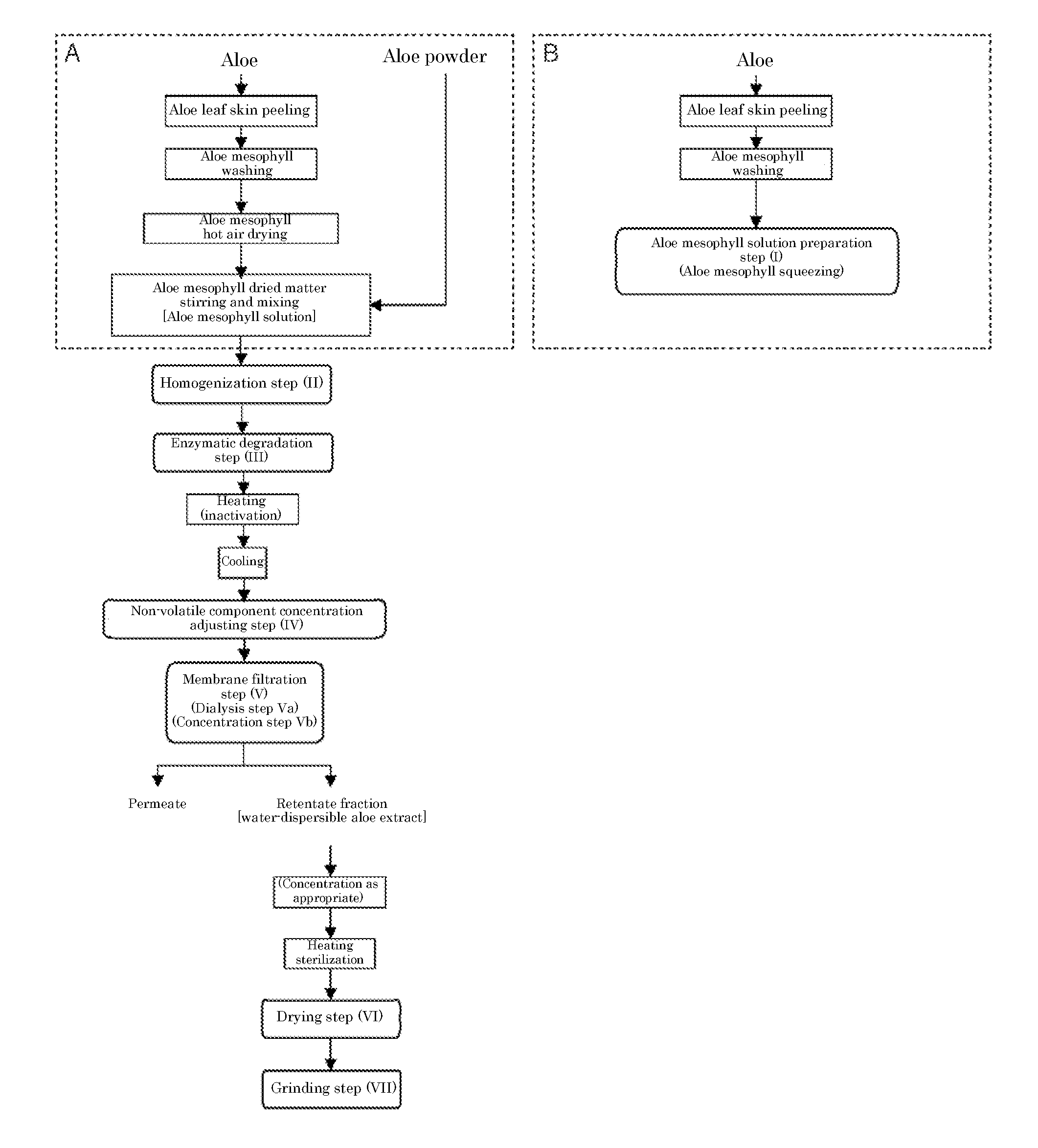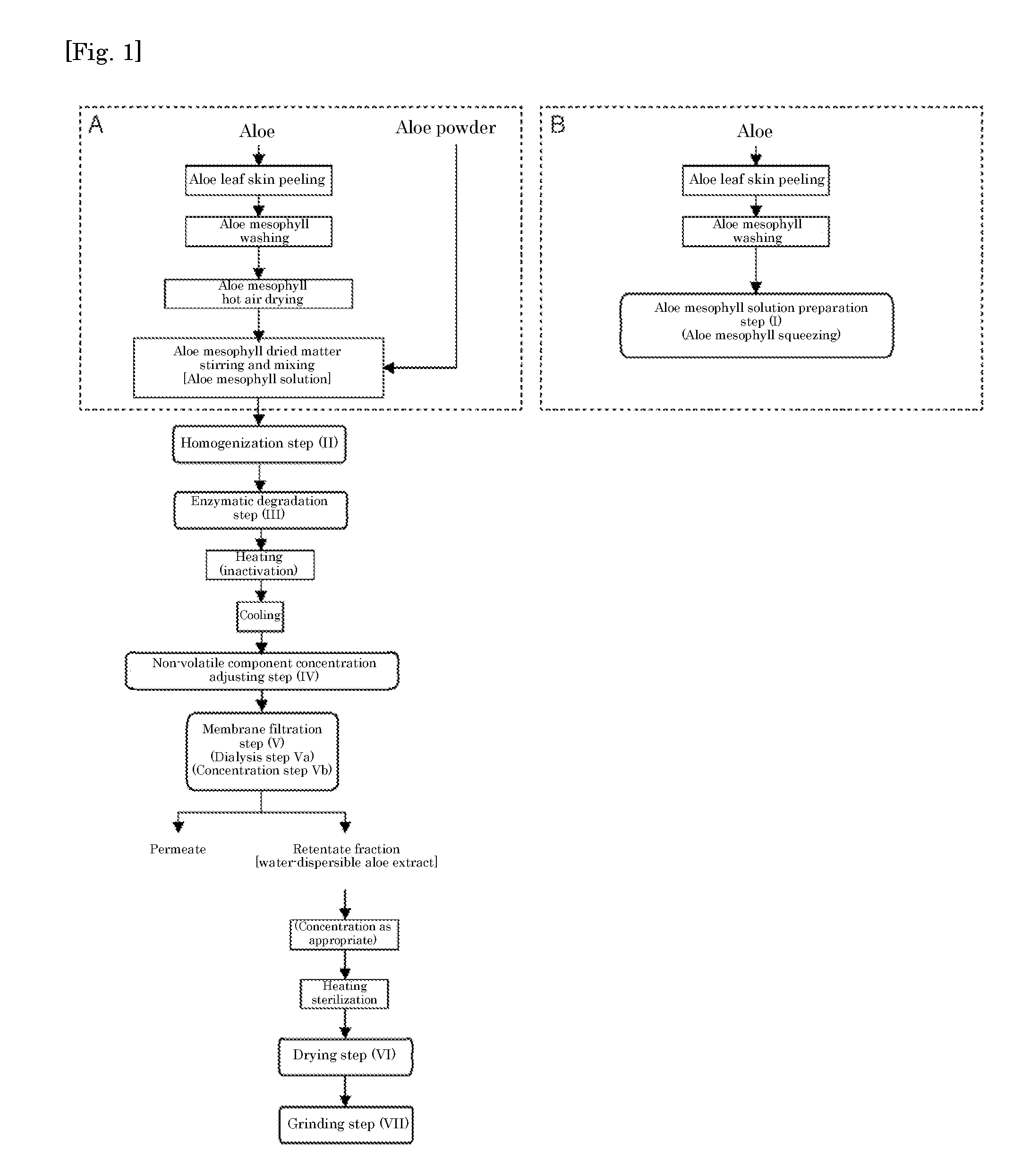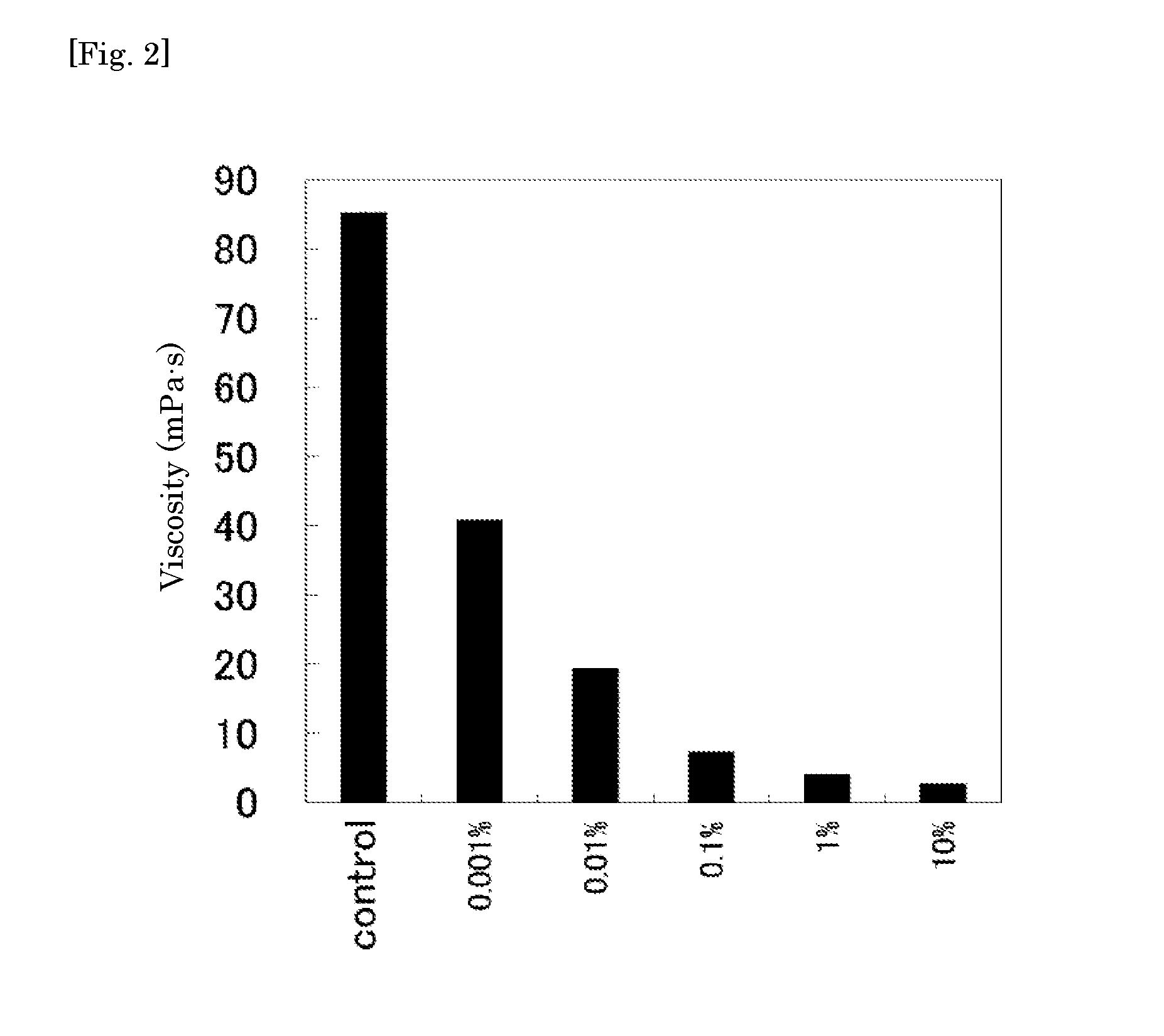Method for manufacturing aloe extract, and aloe extract
a technology of aloe and aloe gel, which is applied in the directions of plant/algae/fungi/lichens, organic active ingredients, plant ingredients, etc., can solve the problems of organic solvents, methods are problematic, and methods are problematic, and achieve excellent processability into foods.
- Summary
- Abstract
- Description
- Claims
- Application Information
AI Technical Summary
Benefits of technology
Problems solved by technology
Method used
Image
Examples
experimental example 1
[0092]In Experimental Example 1, screening was conducted for polysaccharide-degrading enzyme formulations which are optimal for degradation of polysaccharides contained in the aloe mesophyll.
(1) Preparation and Homogenization of Aloe Mesophyll Solution
[0093]From a raw leaf of Aloe vera, the skin was peeled off, and the mesophyll part was taken out, and cut by a cutter to obtain a mesophyll of Aloe vera, which was subjected to hot air drying to obtain a dried Aloe vera gel. The resultant dried Aloe vera gel was cut into finer particles using a mill to obtain a dried Aloe vera gel powder (Aloe Vera Gel Powder; AVGP). 1 kg of the dried Aloe vera gel powder was combined with 20 kg of ion exchange water and stirred using a homomixer (trade name: Homomixer MARK Model II 2.5, manufactured by PRIMIX Corporation) at 12000 rpm for 30 minutes to achieve homogeneity. This was employed as an aloe mesophyll solution (aloe mesophyll concentration: about 4.8%).
[0094]As poly...
experimental example 2
1 of Amount of Polysaccharide-Degrading Enzyme to be Added>
[0097]In Experimental Example 2, the amount of the polysaccharide-degrading enzyme to be added which is optimal for the degradation of the polysaccharides contained in the aloe mesophyll was studied. In this Experimental Example, hemicellulase was employed as an example of the polysaccharide-degrading enzymes.
(1) Preparation and Homogenization of Aloe Mesophyll Solution
[0098]By the method similar to that in Experimental Example 1, an aloe mesophyll solution was prepared.
[0099]Each 210 g of the aloe mesophyll solution was placed in a 300-mL conical flask, and 40 g of the enzyme solution containing hemicellulase 90 was added immediately before starting enzymatic degradation (250 g in total, final aloe mesophyll concentration: 4%). The hemicellulase concentration of the enzyme solution was adjusted so that the enzyme amount based on the aloe mesophyll became 1% (0.1 g), 0.1% (0.01 g), 0.01% (0.001 g), a...
experimental example 31
2 of Amount of Polysaccharide-Degrading Enzyme to be Added>
[0102]In Experimental Example 3, the effect of the amount of the polysaccharide-degrading enzyme added on the amounts of the polysaccharides, aloe mesophyll-derived phytosterol (6-sitosterol), and malic acid contained in the aloe extract was investigated. In this Experimental Example, hemicellulase was employed as an example of the polysaccharide-degrading enzymes.
(1) Preparation and Homogenization of Aloe Mesophyll Solution
[0103]By the method similar to that in Experimental Example 1, an aloe mesophyll solution was prepared.
[0104]By the method similar to that in Experimental Example 2, the polysaccharides contained in the aloe mesophyll solution were subjected to enzymatic degradation.
(3) Membrane Filtration
[0105]300 g of each aloe mesophyll solution which had completed the enzymatic degradation was then subjected to an ultrafiltration device (FILTRATON SYSTEM PS-24001; manufactured by Asahi Kasei C...
PUM
| Property | Measurement | Unit |
|---|---|---|
| particle size | aaaaa | aaaaa |
| particle size | aaaaa | aaaaa |
| molecular weight | aaaaa | aaaaa |
Abstract
Description
Claims
Application Information
 Login to View More
Login to View More - R&D
- Intellectual Property
- Life Sciences
- Materials
- Tech Scout
- Unparalleled Data Quality
- Higher Quality Content
- 60% Fewer Hallucinations
Browse by: Latest US Patents, China's latest patents, Technical Efficacy Thesaurus, Application Domain, Technology Topic, Popular Technical Reports.
© 2025 PatSnap. All rights reserved.Legal|Privacy policy|Modern Slavery Act Transparency Statement|Sitemap|About US| Contact US: help@patsnap.com



